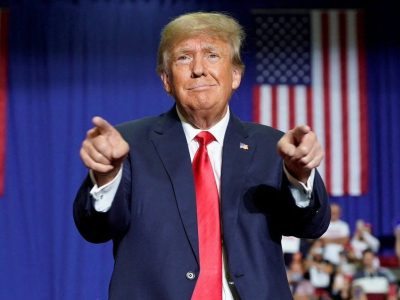
India has witnessed two inflexion points in its journey of cashless transactions.
November 2016, when the Indian government announced the demonetisation of high-value currency notes and Covid-19 which forced people across the world to use digital modes of payments to avoid physical contact.
The journey has so far seen the proliferation of the first digital wallets, and now the unified payments interface (UPI).
Simultaneously, near-field technology (NFC) in digital payments is also gaining traction, especially in urban areas and among tech-savvy consumers.
Contactless cards or tags, most popularly used in public transport payment systems, are currently seen to be vying for a share in the NFC payments pie.
Earlier this year, Indian fintech firm NeoFinity launched NeoZAP, India’s first payment tag that can be attached to phones and used for making payments up to Rs 5,000 without a PIN.
Invezz spoke to Rayan Malhotra, CEO of NeoFinity, the fintech division of the Neo Group to discuss how the market has reacted to NeoZAP, how the company plans to navigate security concerns related to a payment tag, and the challenges he is facing in pushing the product in a market dominated by the UPI. Edited excerpts:
Potential of NFC technology in transactions remains untapped
Invezz: What made you enter this rather unexplored market in India? What are your expectations and forecasts for NFC payments in India?
Entering the NFC payments market in India was driven by the recognition of a significant gap in the contactless payment space.
While digital payments have seen exponential growth, the potential of NFC technology, especially in providing seamless, secure, and fast transactions, remained largely untapped.
We saw an opportunity to pioneer this segment and introduce a new layer of convenience and security in everyday transactions.
Our expectations for NFC payments in India are optimistic. As awareness grows and the technology becomes more integrated into daily life, we anticipate rapid adoption across various sectors.
We forecast that NFC payments will capture a significant share of the digital payments market, driven by increasing smartphone penetration, enhanced user experience, and ongoing digital transformation across the country.
What about security concerns regarding the use of contactless cards?
Invezz: There is generally a fear among people regarding the adoption of NFC tags in India. Risks of misuse owing to a lost contactless card persist. How are you creating awareness for NFC then?
We understand that concerns about security and misuse are significant barriers to the adoption of NFC technology.
To address these concerns, we are actively educating consumers about the security features embedded in NeoZAP, such as encryption and tokenization, which protect their data and transactions.
We are also conducting awareness campaigns that highlight the ease of disabling a lost card and the minimal risk associated with unauthorized use due to transaction limits and instant alerts.
Our efforts include partnerships with financial literacy programs and leveraging digital platforms to spread awareness about the benefits and safety of NFC payments.
By providing clear, transparent information and addressing common misconceptions, we aim to build consumer confidence and encourage widespread adoption.
Invezz: What are the challenges that you have faced in pushing NeoZAP into the market?
One of the main challenges we’ve encountered is overcoming the initial resistance to adopting a new technology like NFC payments.
Many consumers and merchants are accustomed to traditional payment methods and are hesitant to switch to something unfamiliar.
Additionally, infrastructure limitations, such as the availability of NFC-enabled devices and terminals, pose a challenge in ensuring widespread accessibility.
Challenging the dominance of UPI
We have also faced challenges in raising awareness about the advantages of NFC over existing payment options, especially in a market dominated by UPI.
Education of both consumers and merchants about the long-term benefits, such as enhanced security, speed, and convenience, is an ongoing effort.
Despite these challenges, the positive feedback and growing user base have been encouraging, and we remain committed to overcoming these hurdles.
Invezz: UPI has proliferated in India in a big way, be it users or service providers. Where, then, does NeoZAP expect to find its niche? Are service providers like retail outlets, etc., open to adopting it?
UPI has indeed transformed the payment landscape in India, but NeoZAP offers a unique value proposition that complements existing payment systems.
NeoZAP’s niche lies in its ability to facilitate quick, contactless payments that are particularly suited for scenarios where speed and convenience are paramount, such as public transportation, retail checkouts, and event ticketing.
We have seen a positive response from service providers, particularly retail outlets, who recognize the benefits of offering multiple payment options to their customers.
Many are open to adopting NeoZAP as it enhances the customer experience and aligns with the growing trend of contactless transactions.
As we continue to expand and educate the market, we anticipate further integration of NeoZAP into various sectors.
Expectations from the government
Invezz: Are you receiving adequate government support for the product? Are there steps you would like the government to take to further popularize the technology?
We have received encouraging support from the government, particularly in terms of policies that promote digital payments and innovation.
However, there is always room for more proactive measures.
We would welcome further government initiatives aimed at expanding NFC infrastructure, such as subsidies for merchants to adopt NFC-enabled terminals and public awareness campaigns highlighting the benefits of contactless payments.
Additionally, government-backed programs that incentivize the use of NFC technology in public services and transportation could significantly accelerate adoption.
Collaborations between the government and private sector to develop and implement these initiatives would help popularize the technology and ensure that India remains at the forefront of digital payment innovations.
The post Interview: NeoFinity CEO optimistic on NFC payments, says UPI dominance, infra limitations key challenges appeared first on Invezz











